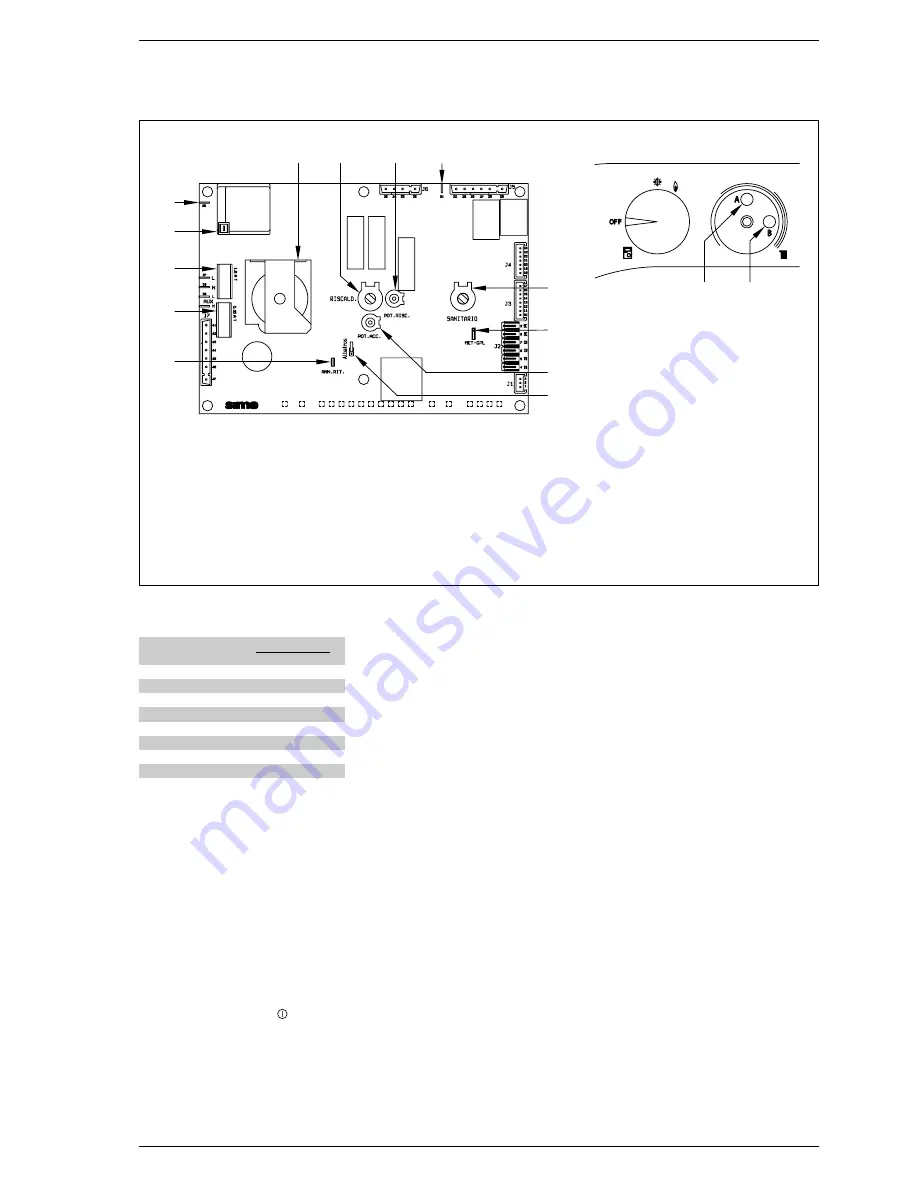
94
3.3
ELECTRONIC
IGNITION
Ignition and flame detection is controlled
by two electrodes located on the burner.
These guarantee maximum safety with
intervention times, for accidental swit-
ching off or gas failure, of within one
second.
3.3.1
Operating cycle
Rotate the selector knob to summer or win-
ter, and verify that green led (
) lights up to
confirm the presence of voltage.
The burner must be ignited within 10
seconds. However, it is possible for ignition
failures to occur, with consequent activa-
tion of signal indicating that the control box
has “locked out”.
–
Gas failure
The electrode continues spark discharge
for a maximum of 10 sec.If the burner
does not light, the lock-out indicator will
light up.
This may occur upon first ignition or
after long periods of boiler lay-off when
there is air in the pipes. It may be caused
by the gas cock being closed or by one of
the valve coils having a break in the win-
ding, so that the valve cannot open.
–
Ignition electrode fails to spark
In the boiler, only the gas to the burner
is seen to open.
After 10 sec. the warning light indica-
ting equipment “lock-out” lights up.
This may be due to a break in the wire of
the electrode or to the wire not properly
fastened to the electric terminal of the
control box or the ignition transformer.
–
No detection of flame
The continuous spark discharge of the
electrode is noted starting from ignition
even though the burner is lit.
A f t e r 10 s e c o n d s h a v e e l a p s e d , t h e
sparks cease, the burner goes out, and
the warning light indicating equipment
“lock-out” lights up.
There could have a break in the wire of
the sensing electrode or the electrode
itself is touching earth: the electrode is
worn out and needs replacing. The con-
trol box is defective.
When there is a sudden voltage failure, the
burner shuts out immediately; when power
supply returns, the boiler will start up again
automatically.
3.4
AIR PRESSURE
SWITCH
The air pressure switch is factory set to
the values 40-57 Pa to guarantee boiler
functioning even with intake and flue pipes
at the maximum permitted length.
The value of the signal to the pressure
switch is measured using a special instru-
ment connected to the pressure intake
(5-4 fig. 3).
3.5
FLOW SWITCH SAFETY VALVE
A flow switch safety valve (18 fig. 3) interve-
nes, blocking the operation of the burner if
the boiler is without water due to the for-
mation of an air lock in the heat exchanger
or if the circulator is not working, or becau-
se the “Aqua Guard” filter is obstructed with
impurities.
NOTE: If replacing the flow switch valve,
make sure that the arrow stamped on
the valve points in the same direction as
the flow of water.
Fig. 20
1
2
3
4
5
12
11
10
9
8
7
6
15
6
10
KEY
1 Ignition electrode earth faston
2 Ignition electrode faston
3 Fuse (1,6 AT)
4 Fuse(0,16 AT)
5 “ANN. RIT.” connector
6 “POT. ACC.” trimmer
7 Conector “MET-GPL”
8 ------
9 Detector electrode faston
10 “POT. RISC.” trimmer
11 C.H. potentiometer
12 Selector CR/OFF/EST/INV/RESET
15 Albatros RVA 47 conector
NOTE:
To gain access to trimmers (6) and (10), unscrew
the central heating potentiometer knob.
TABLE 3/a (Transducer)
Pressure
Resistance (
Ω
)
(bar)
min
max
0
297
320
0,5
260
269
1
222
228
1,5
195
200
2
167
173
2,5
137
143
3
108
113
3,5
90
94
WARNING: In sequence/cascade
installations, turn trimmer B (10) as
far as it will go clockwise.












































